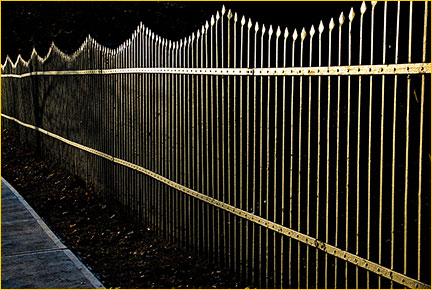Pentax Joins the Digital Big Leagues

One of the first serious cameras that I ever owned was a Pentax Spotmatic. This was in 1965 when I was just beginning my career as a photojournalist. I couldn’t afford a Nikon or a Leica, and the Pentax had stop-down TTL metering (wow!), so as an incipient techy I was drawn to it. Pentax screw mount lenses were ubiquitous and relatively inexpensive. Since then I have used the occasional Pentax model, including the MX for a while in the late 70’s, and in the late 1990’s the Pentax 645 and Pentax 67 medium format systems. The only reason I moved away from these was that they didn’t offer a digital migration path.
In the 35mm arena Pentax has always been one of the middle tier players. Like Olympus with its lovely OM system Pentax took a stab at the pro market with their LX model in the early 1980’s. Both company’s garnered loyal followings but neither were able to seriously challenge Nikon and Canon for the hearts and minds (and wallets) of the pro market.
Pentax was slow in jumping on the DSLR bandwagon, not releasing their first digital SLR until the ill-named *st D in early 2003. This camera was never seen as a strong competitor, and its follow-ups, the DS, DL, DS2, and DL2 never really distinguished themselves, either in terms of features or market penetration. In early 2006 Pentax introduced two new models, the K100D and the K110D, both again with 6MP sensors at a time when the competition had moved to 10MP. Given that Pentax is a small company by comparison to some of its competitors it looked as if the digital steamroller was going to either pass over or at least pass by this venerable camera maker.
But then at Photokina in October, 2006 Pentax announced the K10D, and shipments began in early December. Due to its features and build quality I believe that the K10D changes the DSLR landscape. While it may not bring Pentax into the pro leagues alongside Canon and Nikon, it certainly is going to cause some raised eyebrows at those company’s planning meetings. And, high end amateurs without a legacy investment in lenses from another brand will also now have to look at the Pentax line seriously when considering a camera in this price range (sub US $1,000 with starter lens). Let’s see why.

Costumed. Toronto, December 2006
Pentax K10 with Pentax 16-45mm f/4 ED AL @ ISO 100
_____________________________________________________________
This is Not a Review
Firstly, a word about what this is not. This is not a full fledged camera review. I don’t do those. If you want a comprehensive listing of what every knob and button does and a complete laundry list of all the camera’s specs and features, I recommend you to those sites that do this well – DPReview being one such.
What follows here is rather an opinionated, some would say biased, hands-on report based on a week’s worth of shooting and testing. What I’ll be commenting on are how well the camera’s features work, how readily accessible they are, and how the camera performs in real-world shooting situations. The lens used during this test period was the digital specific Pentax 16-45mm f/4 ED AL, not one of Pentax’s inexpensive kit lenses, but also not one of their top-of-the line ones either.
It should also be borne in mind that I have not tested let alone used every camera on the market, and so something that strike me as being unique on the K10D may indeed not be. As a Canon user for the past 8 years that company’s cameras are my primary frame of reference with regard to 35mm DSLRs.

Grinch Santa – Toronto, December, 2006
Pentax K10 with Pentax 16-45mm f/4 ED AL @ ISO 100
_____________________________________________________________
Doing the Laundry
While I assume that you know something about the K10D (otherwise you wouldn’t be here), I won’t recite every feature and spec. There are enough of them though that a small summary is likely in order. The K10D’s more salient features include…
– 10MP APS-C sized CCD sensor
– Shake reduction, usable with all lenses
– Dust removal system
– a weather sealed gasketed body
– 11 point autofocus
– DNG raw format
– post exposure in-camera conversion from raw to JPG
…and about two dozen more capabilities, which make this one of the most feature-rich cameras on the market, at any price point.
Shake Reduction
Certainly in-camera shake reduction is a real plus for all photographers, and I found it to offer at least a two stop and sometimes three stop advantage over hand-held shooting without it. (Pentax claims 3 – 4 stops, but that’s the marketing guys for you).
Canon and Nikon’s lens-based stabilization offers some advantages, such as the ability to select just one axis of motion. This makes panning possible, while maintaining stabilization vertically. Canon’s high-end stabilized lenses also sense when the camera / lens combo is tripod mounted and adjust IS accordingly. With the Pentax and similar in-camera systems you’ll need to remember to turn shake reduction off (with a rear switch) in such situations.
But the good news for K10D owners is that they can have the benefits of shake reduction with all lenses, not just those with stabilization built in.
DNG raw Format
Hats off to Pentax for offering the K10D with the open DNG raw format as an option along with Pentax’s own proprietary raw format. This makes Pentax the first of the major Japanese companies to shed their corporate ego and offer consumers a choice of a non-propretary raw format. Right out of the box this means that K10D raw files can be used with current and previous versions of Adobe Camera Raw, Lightroom, and several other raw processing programs. Pentax ships the camera with a SilkyPix based image processing program, but as soon as I saw that DNG was supported I didn’t even open their disk envelope, preferring to use more familiar, more mainstream. and more powerful tools.
Canon? Nikon? Are you listening? Photographers want open standards. Photographers want DNG, or some similar open alternative. Follow Pentax’s example please and let us have it.
Anti-Dust
It seems that more and more companies are adding anti-dust capability to their latest cameras, and Pentax isn’t about to be left behind. I set my test camera to vibrate each time the camera is turned on, and over several hundred frames never saw any dust particles on an image file. My guess is that within a year or so this capability will be de-regeur on all new cameras.

Beach Walker. Toronto – December, 2006
Pentax K10 with Pentax 16-45mm f/4 ED AL @ ISO 100
Weather Sealing
This is a sign that Pentax wants this camera to be perceived as a step above any DLSR that they’ve previously released, and it should be. I didn’t shoot with the K10D in the rain, or stand in the shower with it, but if past experience with weather sealed cameras is any indicator this camera should be able to take just about any weather that the photographer can.
Users should note though that unlike Canon which offers a rubber gasket on some of their newer pro lenses, no Pentax lenses have this feature. This means that the lens and the lens’ attachment point at the front of the camera body become the critical entry point for any environmental threats.
Autofocus
The K10D’s 11 point autofocus is fast and accurate, though I did find that it hunted a bit more in low light than what I’m used to with the Canon cameras with which I am familiar. The user can leave the camera set so that it autoselects the best focus point, or the center point, or any other of the 11 points can be manually selected.
Auto ISO
Finally, there’s a DSLR maker that understands that unlike with film cameras, where the ISO remains constant for between 24 – 36 exposures, with a digital camera ISO may end up being changed constantly as the light and shooting environment changes from moment to moment. Digicam makers have understood this, but Canon at least with their DSLRs to date has not embraced this seemingly radical concept.
Pentax has taken the concept of having ISO sensitivity a full user variable, along with shutter speed and aperture, to a higher level by providing the user with the ability to set an upper and a lower point within which the camera will be free to automatically alter the ISO setting. They have also included a user settable warning in the viewfinder for when the range has been exceeded. My only cavil is that the ISO is not constantly visible in the viewfinder. If this had been the case I’d have given this capability a 100%. As it it gets a respectable 90% on the desirability meter.

An example of a situation when this can come in handy was when I was shooting the wrought iron fence, seen above, at sunset. The K10D was set to Aperture Priority mode, and I knew that I’d have to stop down to at least f/16 to get sufficient depth of field. Because light levels were low this would have then meant resetting the ISO so as to have a high enough shutter speed to hand hold the shot. But with the camera’s Auto-ISO capability this wasn’t necessary, and I was simply able to stop the lens down to the needed aperture and shoot, knowing that the camera had taken care of this for me.
Shooting Speed
I found the K10D to be very responsive, with virtually no discernable shutter lag. In Continuous shooting mode it is rated at 3FPS, and I noted that up to 12 frames can be shot in this mode before the buffer is full. The camera then proceeds at about 1 additional frame per second as long as the buffer remains full. Very decent performance.
Post Exposure JPG Conversion
I was very pleasantly surprised to see a capability which I have never seen in a digital camera before, and which I’m surprised has taken so long to appear. This is the ability to create JPGs in-camera after the shot has been recorded in RAW mode. The advantage of this is that rather than having to select a JPG conversion that applies to all shots, one can change the various settings afterward for each image, as required.
While it might seem redundant to do the conversion in-camera when one already has the choice of shooting JPG + raw, or doing the conversion afterward on a computer, I can imagine a number of scenarios where this capability will be found of value. Again, kudos to Pentax for some out-of-the-box thinking.
Program Line
Another novel Pentax function is called the Program Line. In Program shooting mode, where the camera sets both shutter speed and aperture (and ISO as well if you wish), you can also set three different ‘Lines". These include High Speed and Aperture, which as you might imagine provide priority to a high shutter speed or to depth of field. But there’s a third, called MTF, which prioritizes the aperture for optimum lens performance. Very innovative.
Ergonomics
The Pentax K10D is a mid-sized camera, roughly similar in size and weight to the Canon 30D or Nikon D200. In typical DSLR fashion it is bristling with buttons, wheels, knobs and levers. I counted some 27 in all. This is more than twice as many as the svelte Leica M8 which I’ve been working with recently.
Nevertheless, the layout of the controls is logical, and a few days of constant use (as well as some time with the generally well written manual) will lead to familiarity. The only real concern hat I have is that the shutter release is perched high on the grip with the front control wheel at the leading edge of the grip. For my hands, at least, this is a bit less comfortable than having the wheel behind the shutter release and this button more to the front of the grip. A minor point, but something that after a week or so of constant use I never really became comfortable with.
I was pleased to note that along with similarly sized competitors there is a proper full-sized top panel LCD. Many cameras that strive for small size and bulk have eliminated this, which I find hard to become accustomed to as having to rely on the rear LCD is not a suitable alternative. Some shooting information needs to be visible all the time.
The K10D’s viewfinder is relatively large and bright, as good as any reduced-frame DSLR that I have seen.
_____________________________________________________________
High ISO Noise and Banding
Noise levels all the way through ISO 800 is very low and clean. At ISO 800 and 1600 noise starts to build but is comparable to most other current DSLRs. So is the noise at ISO 1600, which while there, is easily dealt with through one of the popular noise reduction programs, such as Noiseware Pro (my current favourite) or Noise Ninja.
ISO 1600 Sample.
Pass your mouse over this frame to view the Blue Channel
While most ISO 1600 shots are no worse than current cameras from other makers, I did see some vertical banding in a few instances. This is from the Blue Channel, always the noisiest of the three on most cameras. The example above shows the blue channel if you pass your mouse over the image. Below is a cropped section of this same frame’s blue channel.
 |
I think that it would be a mistake to read too much into this prematurely. This noise banding is not seen all the time at ISO 1600, but there in darker frames, such as this example. Noise reduction software can handle fairly high degrees of chroma noise such as we see in this example, but it can’t deal with banding, and so potential buyers should be aware that this may something to keep an eye on.
_____________________________________________________________
Lenses
While the Pentax camera and lens line up till now has used old-technology in-camera autofocus motors, there will be a new line of lenses coming in the new year utilizing ultrasonic motors in the lenses themselves. The K10D will be able to use these new lenses as well as the current generation. This should lead to faster autofocus as well as not having the lens’ focus rings rotate under ones fingers, as they do now.
_____________________________________________________________
The Bottom Line
One can’t really get the measure of a complex camera like the Pentax 10D after just a week of use and a few hundred frames. But, it didn’t take me long to discover that this is a camera that the sophisticated user will find to be a pleasure to work with. Image quality is on a par with virtually anything else on the market, the camera is very feature rich, the price is right, and it therefore isn’t a stretch to say that the K10D is probably the best value in a 10 Megapixel DSLR at this time.
As a Canon user I can only wish that the folks at Canon’s marketing and engineering department have a close look at some of the more innovative features offered by Pentax in this new model. With DNG, post exposure JPG processing, and auto-ISO with limit setting, Pentax now offers one of the most innovative feature sets to be found on any DSLR. It looks like the big boys are going to have to start playing catch-up.
December, 2006
_____________________________________________________________
Handicapping The DSLR Horse Race
Working with Pentax’s latest camera got me to thinking about the current state of the DSLR marketplace. It really has become a two horse race – Canon and Nikon.
During 2006 Nikon has hit its stride, producing a succession of innovative, well featured and well priced cameras. They’ve clearly decided to focus on DSLRs rather than digicams, and the attention has been worthwhile.
Canon is still the market leader, but appears to have lost its edge. The 30D is simply a warmed over 20D, which was a warmed over 10D, which was a warmed over D60 – stretching back to the original D30 of six years ago. Yes, the megapixel size has increased, the rear LCD has gotten bigger, and so on. But fundamentally the past few years have seen little innovation in camera technology from Canon. Their sensors are likely the best in the business; and they certainly have the lowest noise, but as far as photographic creativity Canon has been eclipsed by Nikon, Pentax and others. (No, I’m not discounting full-frame. It’s big (pardon the pun). But it’s about technological achievement, not photographic innovation).
Canon’s 1 Series pro line defined the state of the art when the 1D was introduced in 2001, but that was four years ago, and other than Megapixel count the company hasn’t done much market leading since then. The same feature / function annoyances persist with each succeeding generation, and little innovative has been seen.
The rest of the field, including Olympus and Sony, are also-rans. Olympus seems to have lost the thread, having offered a self-described pro camera with the E1 three years ago, and then not having followed through, even though it quickly became eclipsed. Also, not offering the new and competitive E-400 consumer model in the North American market seems to be handing the market to the competition on a platter, and is a marketing strategy which is hard to fathom. Sony was fast out of the gate with A-100, a recycled Konica / Minolta, but I’m told that sales have now largely tanked, and the product line is not garnering much interest at retail.
Fuji and Sigma are niche players. Both have aging cameras that are scheduled to be replaced over the next few months, and until they prove themselves remain dark horses. Leica and Panasonic are marginal participants at best, at least in terms of market share at this time.
Pentax seems to me to be a bit of wild card. I was ready to put them in the marginal category until the announcement of the K10D, but now I’m not so sure. The company has a venerable name with a lot of legacy brand recognition, at least among people who’ve been involved in photography for more than a decade. Though a very small company by any standard, with the K10D they have shown that it doesn’t take a big budget to be innovative. The long term effect of their relationship with Samsung though remains to be seen.
So, what does the future hold? Clearly Canon and Nikon will continue to dominate the DSLR market. Nikon is coming off a strong year and will likely keep up the pace. Canon has been coasting for a while, and really has to pull up its socks. The company has an R&D budget bigger than the GDP of some small countries. Their leadership in sensor design is clear. Now, as we head into 2007 they have to show that they understand the needs and desires of photographers and can translate that into some truly fresh products. Great sensor design is important and has helped Canon become a market leader, but the company needs to remember that photography is about more than megapixels and noise free files.
As for Pentax, the main subject of this page, the K10D could well be the beginning of their renaissance. Competition is what makes any market vibrant. Let’s hope that Pentax is successful in shaking up some of the market leaders, as well as in repositioning themselves as a potential major player. With the K10D I believe that they’ve got the product that can help them do this.
December, 2006
You May Also Enjoy...
Some Noise About Noise
Introduction and Summary Findings To judge from the various threads in discussion forums and web reports with performance tests, the arrival of the latest crop

